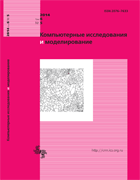All issues
- 2025 Vol. 17
- 2024 Vol. 16
- 2023 Vol. 15
- 2022 Vol. 14
- 2021 Vol. 13
- 2020 Vol. 12
- 2019 Vol. 11
- 2018 Vol. 10
- 2017 Vol. 9
- 2016 Vol. 8
- 2015 Vol. 7
- 2014 Vol. 6
- 2013 Vol. 5
- 2012 Vol. 4
- 2011 Vol. 3
- 2010 Vol. 2
- 2009 Vol. 1
Electric field effects in chemical patterns
Excitation waves are a prototype of self-organized dynamic patterns in non-equilibrium systems. They develop their own intrinsic dynamics resulting in travelling waves of various forms and shapes. Prominent examples are rotating spirals and scroll waves. It is an interesting and challenging task to find ways to control their behavior by applying external signals, upon which these propagating waves react. We apply external electric fields to such waves in the excitable Belousov–Zhabotinsky (BZ) reaction. Remarkable effects include the change of wave speed, reversal of propagation direction, annihilation of counter-rotating spiral waves and reorientation of scroll wave filaments. These effects can be explained in numerical simulations, where the negatively charged inhibitor bromide plays an essential role. Electric field effects have also been investigated in biological excitable media such as the social amoebae Dictyostelium discoideum. Quite recently we have started to investigate electric field effect in the BZ reaction dissolved in an Aerosol OT water-in-oil microemulsion. A drift of complex patterns can be observed, and also the viscosity and electric conductivity change. We discuss the assumption that this system can act as a model for long range communication between neurons.
Copyright © 2014 Dähmlow P., Luengviria C., Müller S.C.
Views (last year): 8.Indexed in Scopus
Full-text version of the journal is also available on the web site of the scientific electronic library eLIBRARY.RU
The journal is included in the Russian Science Citation Index
The journal is included in the RSCI
International Interdisciplinary Conference "Mathematics. Computing. Education"







